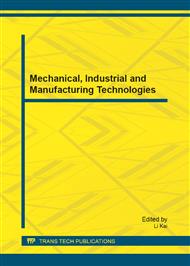p.3
p.8
p.15
p.20
p.27
p.33
p.41
p.46
Numerical Simulation on Shock Initiation of Double-Shell Charges by High Velocity Impact
Abstract:
A two dimensional axisymmetric finite element analysis is preformed using AUTODYN-2D hydrocode, to simulate the dynamic response of explosive, named PBX9404 which is located behind double-shell, by the impact to shell surface resulted from high velocity spherical projectile. Simulation results shows that shock to detonation transition occurs when impact velocity is between 3.6~3.9km/s; but when the velocity increases to 4~4.3km/s, projectile will break up into pieces and the surface momentum density of debris cloud to second shell will decrease dramatically so no shock to detonation could occur. When the velocity further elevates to 4.4 km/s and above, projectile kinetic energy will cover the energy of projectile break-up, and also provide sufficient energy to further increase the surface momentum density of debris cloud, with a result that shock to detonation can be observed again. In conclusion, there is a velocity blind zone in shock to detonation of high velocity projectile to double-shell charges.
Info:
Periodical:
Pages:
3-7
Citation:
Online since:
June 2012
Authors:
Keywords:
Price:
Сopyright:
© 2012 Trans Tech Publications Ltd. All Rights Reserved
Share:
Citation:


